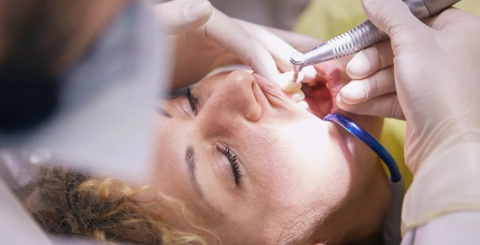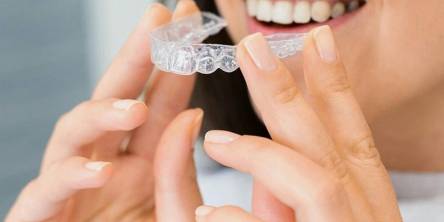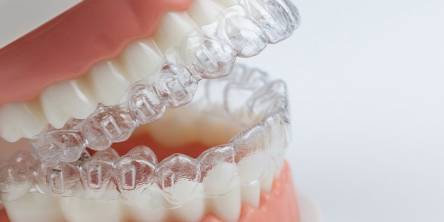How Can You Benefit From Crown Lengthening?

Most individuals have heard the term "dental crown" before. However, few people understand crown lengthening or why it is necessary. Dental crown lengthening is frequently an essential step in preparing your teeth for a dental crown.
Dental crown lengthening is the removal of gum tissue, bone, or both to reveal more of the tooth's structure.
You may have a broken tooth at the gum line or a decaying tooth. After your dentist eliminates the tooth decay, there may not be enough tooth structure above the gum line to support a dental crown (or even a large filling). Ill-fitting dental crowns, which lack enough structure to grasp onto, can cause chronic inflammation and irritation. Even worse, tooth decay may penetrate the dental crown, necessitating additional dental treatment. You may lose the tooth completely.
Crown lengthening, while less common, can also be used cosmetically to alleviate what is known as a "gummy smile." When there is an unusually significant quantity of gum tissue around the top teeth, crown lengthening may be helpful. Your dentist can reveal more of your teeth and shape your gum line to achieve the look you desire.
What to Expect From Dental Crown Lengthening Procedure?
Dental crown lengthening is a form of oral surgery. A periodontist - a dentist who specializes in treating gum and bone tissue problems - performs the procedure. Crown lengthening surgery can be performed on one or more teeth or on the entire gum line, depending on your unique requirements. Crown lengthening surgery is a straightforward treatment that is frequently performed in your periodontist's office under local anesthesia. Sedation dentistry might be administered to reduce dental anxiety during the process.
If you have a temporary crown, the periodontist will remove it before the surgery and replace it afterward. The periodontist begins by making cuts in the tissue to draw the gum away from the teeth. This allows access to the teeth's roots and the bone around them. In certain circumstances, removing a small amount of gum tissue is sufficient. In most cases, a part of the bone should be removed.
After exposing enough of the tooth's anatomy, the periodontist will clean the region with saline water and stitch the gums together. Some periodontists will wrap the incision in a specific bandage.
Recovery Period
Dental crown lengthening is considered a minor procedure with little pain. If that pain persists, the periodontist will issue a prescription. You will also be given a special mouth rinse and dental care instructions to help you care for your teeth while recovering. You should follow your usual dental hygiene practice, but avoid brushing the gums in the afflicted area.
Your periodontist will remove the stitches around one week after crown lengthening surgery. Your gums may need to heal a little longer before your tooth can be fitted with the final dental crown.
Crown lengthening, like any other surgical procedure, carries dangers. You may have bleeding or become infected following surgery. Because your tooth's root is exposed, you may be more sensitive to heat and cold. This will go away after the dental crown is in place. Removing bone from around a tooth can help it loosen up. If the tooth is ever lost, inserting dental implants in that location may be difficult.
If your dentist suggests a dental crown, inquire whether you will also require crown lengthening. Depending on how many good teeth your dentist has to deal with, crown lengthening may be required to achieve the best results.
Here are some tips on how to take care of your oral cavity on this journey.
- Brush your teeth twice a day, every day;
- Do not smoke;
- Floss daily;
- Schedule regular checkups and cleanings;
- Eat a balanced diet.
Similar Articles
When most people think about straightening their teeth, they envision traditional metal braces. However, because of recent advances in orthodontics, there are now more discreet, pleasant, and efficient solutions available.
Healthy gums not only ensure a beautiful smile but are also essential for overall oral health. However, conditions often arise that require surgical intervention in addition to dental treatment.
A tight booking calendar, a last-minute casting call, and a grin that has to look flawless by Friday—life as a Harlem creative rarely leaves space for dental upgrades
Gingivitis is an inflammation of the gums caused by the accumulation of plaque and bacteria.
Curious about Invisalign but unsure if it's the appropriate treatment option for you? You are in the right place. We are the experts in clear aligner orthodontic systems
A missing tooth is not only an aesthetic problem but can also affect overall oral health.
A snow-white smile has been a symbol of health, self-confidence, and success. For this reason, teeth whitening is one of the most popular procedures in dentistry. But not everything is as simple as it might seem at first glance
In the age of social media, TikTok has quickly become a platform where trends are born and shared at lightning speed
A toothache can be unbearable and literally throw you out of your usual rhythm of life.









